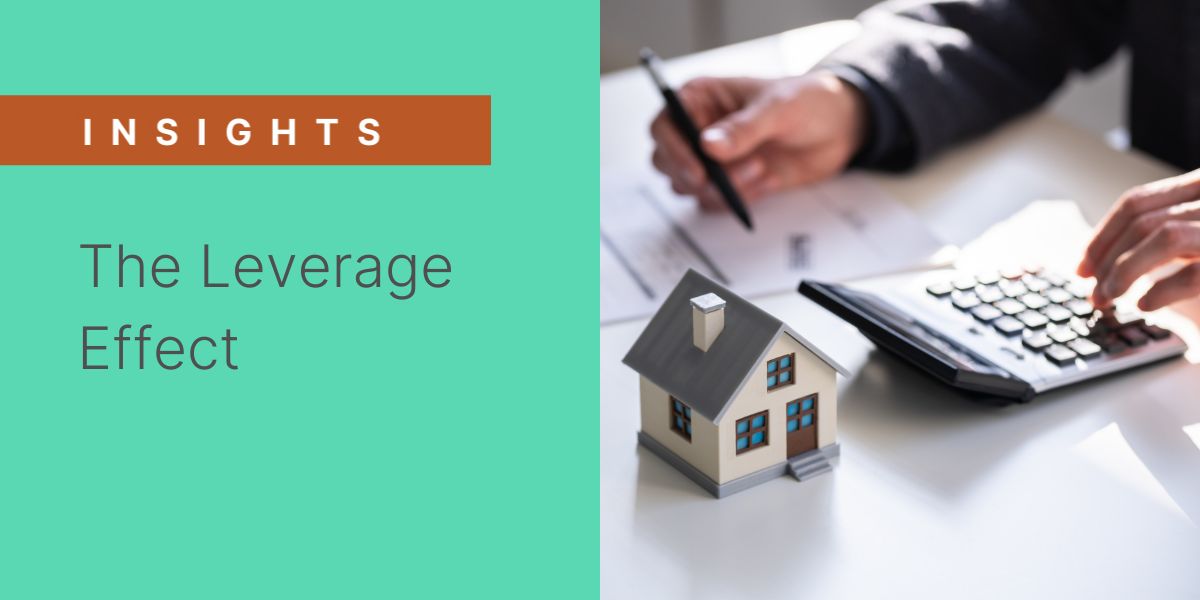
Turning a Small Down Payment into Big Returns in Property Investment
Ever wondered why seasoned real estate investors seem unfazed by rising interest rates? How do they continue to succeed and thrive in a market that seems less than ideal to many? Could the key to their resilience and profitability be a strategy that's more within their grasp instead of chasing low-interest rates?
Low interest rates aren’t the only measure of a good deal. For real estate investors (REIs) trying to navigate a high-interest-rate environment, focusing less on interest rates and more on leverage can help yield impressive returns in any market.
Leverage is using borrowed funds, or “Other People’s Money,” to increase the potential return on investment. While paying cash for your forever home will save you thousands in interest over the course of your life, using leverage for investment properties is often the only way to quickly scale profit on rental or fix-and-flip properties without having to shell out a ton of your own money upfront.
Leverage is far from a foreign concept in real estate – after all, most home buyers take out a mortgage to fund their purchases. But traditional loans for real estate investors typically offer low leverage and require more equity (cash from the investor’s pocket!), which can leave you cash-strapped and unable to quickly invest in more properties to scale your businesses. However, lenders like Kiavi offer high-leverage products for qualifying investors that can free up their capital and enable them to turn a bigger profit faster.
Here’s how.
Running the numbers: How can I make the most of my equity?
Let’s say that you have identified an investment property with a $100,000 purchase price. You could pay cash upfront and drop $100,000 of your own money, or you could take out a loan.
While a typical real estate investor (REI) short-term loan might require a 20-30% (or $20,000-$30,000) down payment, lenders like Kiavi that focus on real estate investors offer loans to qualifying borrowers requiring as little as 5% ($5,000) cash upfront. This ratio can also be expressed as a 95% Loan-To-Cost ratio or an 80% After Repair Value (ARV). With a product like this, instead of using $100,000 of your own cash or $20,000 - $30,000 for a down payment, your upfront commitment is only $5,000 - $20,000.
As a real estate investor, typical loan payments can also be a drain on your pocketbook. To further support REIs in preserving their cash, Kiavi also offers loans that require payment on only the interest accumulating for a certain period. This enables you to avoid making larger monthly payments on interest and principal, which, depending on the timeframe of the investment, can help to maximize profit and minimize the strain on your own capital. This type of loan is a good option if you’re a borrower who plans to refinance or pay the loan off in some other way within a three- to 10-year period.
Why use leverage when rates are high?
While it may be tempting to wait until interest rates drop to borrow money, doing so could cause you to miss out on business-building opportunities that will be more challenging to secure later. Here are three benefits of using high-leverage products and jumping on potential real estate investment deals despite high interest rates:
- More cash in hand: The more leverage taken, the more cash you keep in your pocket. This gives you the flexibility to scale your portfolio (simultaneously invest in more properties) or make other investments that would otherwise be held up.
- Speed to market: Choosing a property loan with high leverage can allow you to move rapidly to the next opportunity. That’s because your money isn’t tied up in a larger down payment somewhere else.
- Profit and flexibility: A high-interest rate environment doesn’t make using leverage a bad idea. While the net profit may be lower when you’re paying higher finance costs by percentage, the profit relative to the equity invested into a deal offers a much greater overall return with leverage thanks to the liquidity to scale. Plus, there’s always the option to refinance as the market changes.
Of course, taking out a high-leverage loan can come with some sticker shock when interest rates are high. Deals with very low or no financing costs have become less common over the last few years, and while rates may go down slightly this summer, there’s little chance we’ll see them cut in half in the near future. But waiting for a rate cut that may never fully materialize is no way to build a real estate portfolio. If you’re a real estate investor who’s looking to grow today, the math on using a high-leverage loan product still makes sense.
Getting started
It’s important for REIs to ask the right questions to determine what is possible and how to best maximize their returns on any investment property. Every loan type features different terms, including rates, penalties, amortization schedules, or how long the loan needs to be paid and what the payment is calculated against. Kiavi’s platform allows you to plug in the numbers on a prospective investment property to get a quick range of options, including leverage on an adjustable rate or a fixed-rate mortgage.
Leverage is a smart way to scale your portfolio and generate high returns without using a lot of your own money upfront, even in high-interest environments. As long as you’re careful about debt and make the monthly payments on time to avoid hurting your credit or going into foreclosure, leverage is a smart way to jumpstart your portfolio.